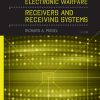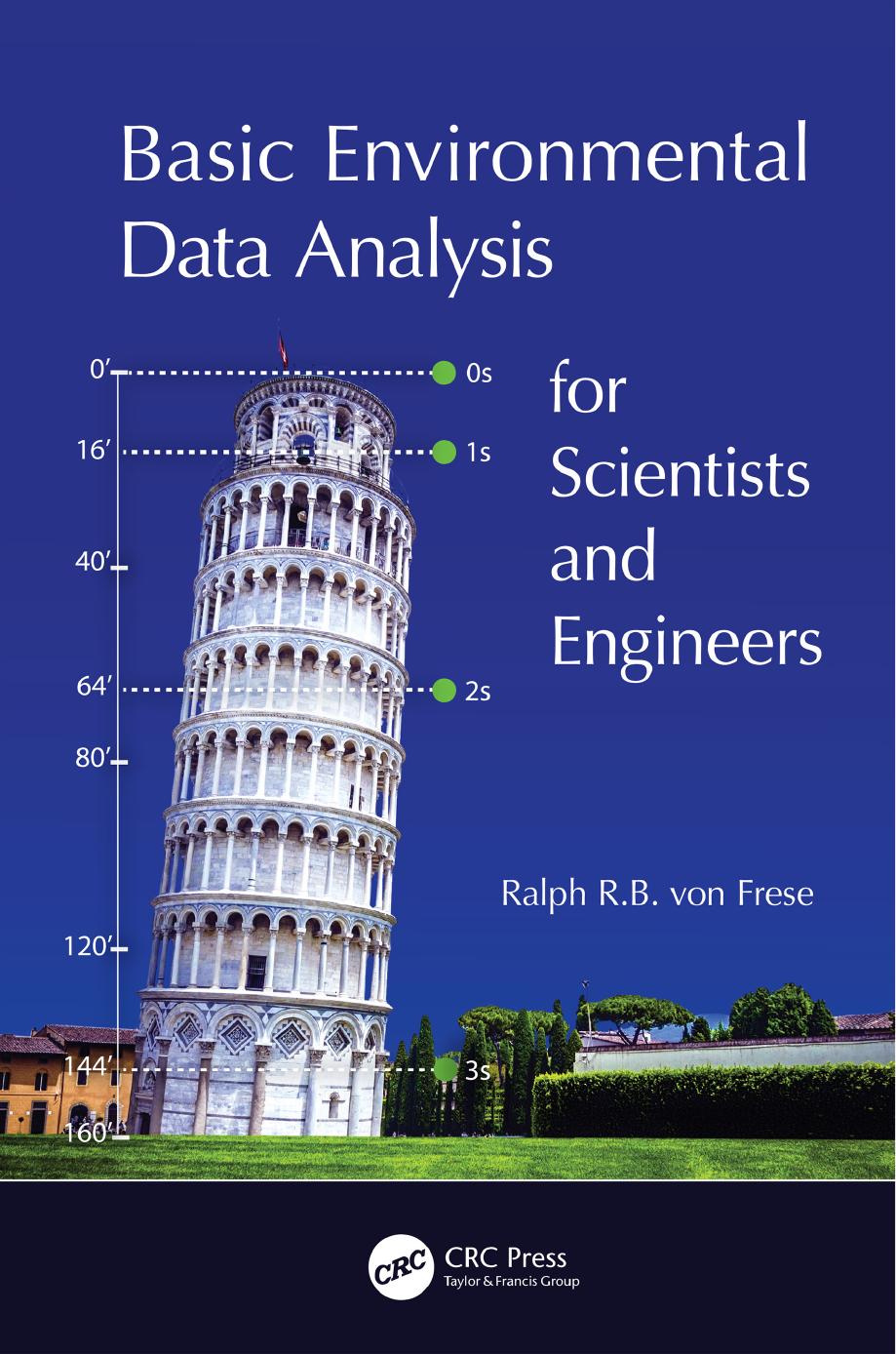Basic Environmental Data Analysis for Scientists and Engineers 1st edition by Ralph Von Frese ISBN 113862778X 978-1138627789
$70.00 Original price was: $70.00.$35.00Current price is: $35.00.
Instant download Basic Environmental Data Analysis for Scientists and Engineers after payment
Basic Environmental Data Analysis for Scientists and Engineers 1st edition by Ralph R.B. Von Frese – Ebook PDF Instant Download/Delivery: 113862778X , 978-1138627789
Full download Basic Environmental Data Analysis for Scientists and Engineers 1st edition after payment

Product details:
ISBN 10: 113862778X
ISBN 13: 978-1138627789
Author: Ralph R.B. Von Frese
Classroom tested and the result of over 30 years of teaching and research, this textbook is an invaluable tool for undergraduate and graduate data analysis courses in environmental sciences and engineering. It is also a useful reference on modern digital data analysis for the extensive and growing community of Earth scientists and engineers.
Basic Environmental Data Analysis for Scientists and Engineers introduces practical concepts of modern digital data analysis and graphics, including numerical/graphical calculus, measurement units and dimensional analysis, error propagation and statistics, and least squares data modeling. It emphasizes array-based or matrix inversion and spectral analysis using the fast Fourier transform (FFT) that dominates modern data analysis. Divided into two parts, this comprehensive hands-on textbook is excellent for exploring data analysis principles and practice using MATLAB®, Mathematica, Mathcad, and other modern equation solving software.
Part I, for beginning undergraduate students, introduces the basic approaches for quantifying data variations in terms of environmental parameters. These approaches emphasize uses of the data array or matrix, which is the fundamental data and mathematical processing format of modern electronic computing. Part II, for advanced undergraduate and beginning graduate students, extends the inverse problem to least squares solutions involving more than two unknowns.
Features:
- Offers a uniquely practical guide for making students proficient in modern electronic data analysis and graphics
- Includes topics that are not explained in any existing textbook on environmental data analysis
- Data analysis topics are very well organized into a two-semester course that meets general education curriculum requirements in science and engineering
-
- Indexes many numerical examples for ready access in the classroom or other venues serviced by electronic equation solvers like MATLAB®, Mathematica, Mathcad, etc.Facilitates learning by beginning each chapter with an ‘Overview’ section highlighting the topics covered, and ending it with a ‘Key Concepts’ section summarizing the main technical details that the reader should have acquired
- Offers supplemental exercises and materials to enhance understanding the principles and practice of modern data analysi
Basic Environmental Data Analysis for Scientists and Engineers 1st Table of contents:
Part I: Digital Data Calculus, Units, Errors, Statistics, and Linear Regression
Chapter 1: Computing Trends
1.1 Overview
1.2 Numeration
1.3 Numerical Calculus
1.4 Computing Devices
1.5 Key Concepts
Chapter 2: Data Attributes
2.1 Overview
2.2 Types
2.3 Formats
2.3.1 Elementary Matrix Algebra
2.4 Units
2.4.1 Dimensional Analysis
2.4.2 Similitude
2.4.3 Summary
2.5 Key Concepts
Chapter 3: Error Analysis
3.1 Overview
3.2 Error Types
3.3 Accuracy and Precision
3.4 Absolute and Relative Errors
3.5 Significant Figures
3.6 Error Propagation
3.7 Key Concepts
Chapter 4: Statistics
4.1 Overview
4.2 Basic Parameters
4.2.1 Population Mean, Variance, and Standard Deviation
4.2.2 Sample Mean, Variance, and Standard Deviation
4.2.3 Variance/Covariance Propagation
4.2.4 Probability and Distributions
4.3 Binomial Distribution
4.3.1 Permutations and Combinations
4.3.2 Probability Interpretation
4.4 Gaussian or Normal Distribution
4.4.1 Probability Interpretation
4.4.2 Curve Fitting a Histogram
4.4.3 Central Limits Theorem
4.5 Statistical Inference
4.5.1 Confidence Intervals on the Mean
4.5.2 Hypothesis Tests of the Mean
4.5.3 Confidence Intervals on the Variance
4.5.4 Hypothesis Tests of the Variance
4.5.5 Analysis of Variance
4.5.5.1 One-way ANOVA
4.5.5.2 Two-way ANOVA
4.5.6 Distribution Testing
4.5.7 Non-Parametric Testing
4.6 Key Concepts
Chapter 5: Data Sampling
5.1 Overview
5.2 Introduction
5.3 Sampling Considerations
5.3.1 Sufficiency
5.3.2 Biasing
5.3.3 Distribution
5.3.4 Errors
5.4 Sampling Methods
5.4.1 Systematic
5.4.2 Random
5.4.3 Cluster
5.4.4 Selecting a Method
5.5 Key Concepts
Chapter 6: Algebraic Linear Regression
6.1 Overview
6.2 Concept of Least Squares
6.3 Straight Line Modeling
6.4 Measures of the Fit
6.4.1 Variances of the Intercept and Slope
6.4.1.1 Uniform Error Observations
6.4.1.2 Variable Error Observations
6.4.2 Confidence Intervals on the Intercept and Slope
6.4.3 Confidence Intervals on the Predictions
6.4.4 Correlation Coefficient
6.4.4.1 Interpretation
6.4.4.2 Significance
6.4.5 Significance of the Fit
6.5 Additional Linear Regression Strategies
6.5.1 Weighted Linear Regression
6.5.2 Reversed Variables
6.5.3 Least Squares Cubic Line
6.5.4 Reduced Major Axis Line
6.6 Key Concepts
Chapter 7: Matrix Linear Regression
7.1 Overview
7.2 Introduction
7.3 Solving for the Unknowns
7.3.1 Cramer’s Rule
7.3.2 Inverse Determination
7.3.3 Elimination Methods
7.4 Sensitivity Analysis
7.4.1 Intercept and Slope Variances
7.4.2 Intercept and Slope Error Bars
7.4.3 Prediction Variance and Error Bars
7.4.4 Correlation Coefficient
7.4.5 ANOVA Significance
7.5 Additional Linear Regression Strategies
7.6 Summary
7.7 Key Concepts
Part II: Digital Data Inversion, Spectral Analysis, Interrogation, and Graphics
Chapter 8: Basic Digital Data Analysis
8.1 Overview
8.2 Introduction
8.3 Data Inversion or Modeling
8.4 Trial and Error Methods
8.5 Key Concepts
Chapter 9: Array Methods
9.1 Overview
9.2 Introduction
9.3 Matrix Inversion
9.3.1 Error Statistics
9.3.2 Sensitivity Analysis
9.4 Generalized Linear Inversion
9.4.1 Eigenvalues and Eigenvectors
9.4.2 Singular Value Decomposition
9.4.3 Generalized Linear Inverse
9.4.3.1 Information Density
9.4.3.2 Model Resolution
9.4.3.3 Model Variance
9.4.4 Sensitivity Analysis
9.5 Summary
9.6 Key Concepts
Chapter 10: Spectral Analysis
10.1 Overview
10.2 Introduction
10.3 Analytical Fourier Transform
10.4 Numerical Fourier Transform
10.4.1 Numerical Errors
10.4.1.1 Gibbs’ Error
10.4.1.2 Wavenumber Leakage
10.4.1.3 Wavenumber Aliasing
10.4.1.4 Wavenumber Resolution
10.5 Key Concepts
Chapter 11: Data Interrogation
11.1 Overview
11.2 Introduction
11.3 Convolution
11.3.1 Analytical Convolution
11.3.2 Numerical Convolution and Deconvolution
11.3.3 Convolution and Correlation Theorems
11.3.4 Summary
11.4 Isolation and Enhancement
11.4.1 Spatial Filtering
11.4.1.1 Geological Methods
11.4.1.2 Graphical Methods
11.4.1.3 Trend Surface Analysis
11.4.1.4 Analytical Grid Methods
11.4.2 Spectral Filtering
11.4.2.1 Wavelength Filters
11.4.2.2 Directional Filters
11.4.2.3 Correlation Filters
11.4.2.4 Derivative and Integral Filters
11.4.2.5 Interpolation and Continuation Filters
11.5 Key Concepts
Chapter 12: Data Graphics
12.1 Overview
12.2 Introduction
12.3 Map Projections and Transformations
12.4 Gridding
12.4.1 Linear Interpolation
12.4.2 Cubic Spline Interpolation
12.4.3 Equivalent Source Interpolation
12.4.4 Polynomial Interpolation
12.4.5 Statistical Interpolation
12.5 Graphical Parameters and Practice
12.5.1 Standardized and Normalized Data
12.5.2 Local Favorability Indices
12.6 Presentation Modes
12.7 Key Concepts
People also search for Basic Environmental Data Analysis for Scientists and Engineers 1st :
data environmental science definition
environmental science dataenvironmental science data
data science environmental
environmental data sources
environmental data science journal
Tags:
Ralph Von Frese,Basic Environmental,Scientists and Engineers



